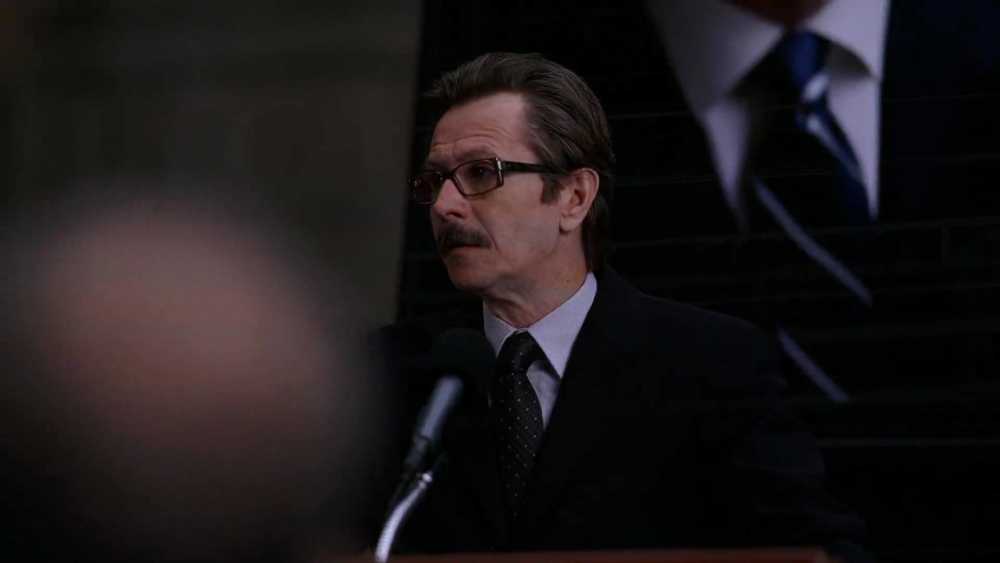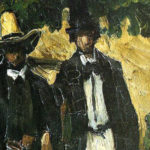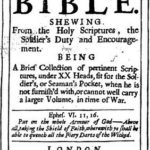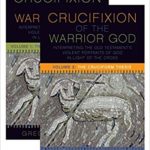We run our website the way we wished the whole internet worked: we provide high quality original content with no ads. We are funded solely by your direct support. Please consider supporting this project.

Yahweh as the Dark Knight
I recently received an interesting analogy for The Crucifixion of the Warrior God from Aaron Reini. Thank you Aaron!
In the final scene of “The Dark Knight,” Batman and Commissioner Gordon are standing over Harvey Dent, whom everyone in Gotham City looks up to as a hero, but whom the Joker had turned into a secret villain appropriately named “Two Face.” Batman and Gordon have just learned that Dent is responsible for a trail of destruction and the death of five citizens. Yet, if the citizens of Gotham discover the tragic truth about Dent’s villainous identity, it will unravel all the good work that had been done in his name and could have dire consequences for the city.
Then Batman has an idea. Watch the scene above.
Awesome, heh? Because Batman sees that the citizens of Gotham City need to believe Dent was a hero, and because he is willing to appear to be “whatever Gotham needs me to be,” Batman, who is Gotham City’s real hero, is willing to take on the appearance of the villain who carried out the atrocities that Dent brought about. In short, Batman’s love for his people leads him to appear guilty of Dent’s crimes and to thus become Gotham City’s Dark Knight.
The analogy of course isn’t perfect (analogies never are), but it captures an important aspect of my thesis in Crucifixion of the Warrior God. Like Batman, the cross reveals a God who has always been willing to appear to be whatever his fallen people need him to be. His love for his people, and his refusal to coerce people into embracing true conceptions of him, frequently led God to appear guilty of crimes that were actually committed by other human or angelic agents.
For example, when his fallen and culturally conditioned people needed to believe Yahweh demanded and enjoyed animal sacrifices, Yahweh humbly stooped to allow them to view him this way, which is why he takes on the appearance of a typical ANE sacrifice-demanding deity within the biblical narrative.
So too, when his people proved incapable of trusting a God who could accomplish his goals non-violently and needed to instead believe Yahweh was a more ferocious violent warrior god than the gods of the other nations, Yahweh humbly stooped to take on the appearance of a rather typical ANE warrior deity who commands and engages in violence. All the violence that OT authors ascribe to Yahweh was actually carried out by human or angelic agents, as their own writings usually make clear. But his ancient people weren’t yet in a place where Yahweh could free them from their assumption that attributing violence to God is the highest form of praise. And so God bears their sinful conception of him and thus takes on an appearance that reflects the ugliness of this sin.
In short, the cross is the quintessential expression of God as our dark knight. To be the loving knight who watches over us and saves us, he must, like Batman, be willing to take on appearances that are acclimated to our darkness.
Ps. If you have other good movie or literary analogies that illustrate the thesis of Crucifixion of the Warrior God, I appreciate seeing them. Please send them to editor@reknew.org. At some point down the road I’d like to compile them into a single resource for people to view.
Pss. Nanny McPhee is already taken. ;-)
Category: General
Tags: Character of God, Crucifixion of the Warrior God, Cruciform Theology
Topics: Attributes and Character
Related Reading

Podcast: How Does a Cruciform Hermeneutic Affect Your Reading of Homosexuality Passages?
Greg talks about accommodation, judgement, and homosexuality. http://traffic.libsyn.com/askgregboyd/Episode_0337.mp3

When Jesus Referred to Canaanites as “Dogs”
Last week I discussed Paul’s harsh language regarding his opponents, the worst example being his reference to certain opponents as “dogs” (Phil 3:2). I suggested that such language simply reflects the fact that Paul wasn’t perfect, as he himself admitted. Several people pushed back on this suggestion by pointing out that Jesus once referred to…

Podcast: Greg Introduces His Cruciform Hermeneutic at the CrossVision Conference and Dialogues with Rachel Held Evans
Greg Introduces His Cruciform Hermeneutic at the CrossVision Conference and Dialogues with Rachel Held Evans. http://traffic.libsyn.com/askgregboyd/Episode_0240.mp3

Jesus and Nationalistic Violence
Throughout the Old Testament, we find Israel spoken of as God’s “chosen nation.” The Israelites were to be a nation of priests whom God wanted to use to unite the world under him (Ex 19:6). Since nationalism and violence inevitably go hand in hand, as Jacque Ellul and others have noted, the covenant God made…

The Trinity and the Crucified God
God has always been willing to stoop to accommodate the fallen state of his covenant people in order to remain in a transforming relationship with them and in order to continue to further his sovereign purposes through them. This is revealed in the life and death of Jesus. Out of love for humankind, Jesus emptied…

Reviewing the Reviews: Tom Belt (Part 1)
Tom Belt has written a four-part review of Crucifixion of the Warrior God on his blog An Open Orthodoxy. Parts 1 and 2 offer an overall fair and balanced summary of CWG, at least to the point that correcting misunderstandings would feel petty. In Part 3 Tom offers a critique of volume I, and this is what I’d like…
